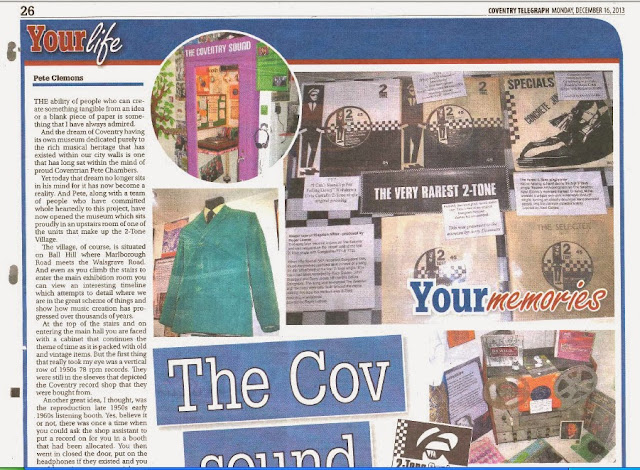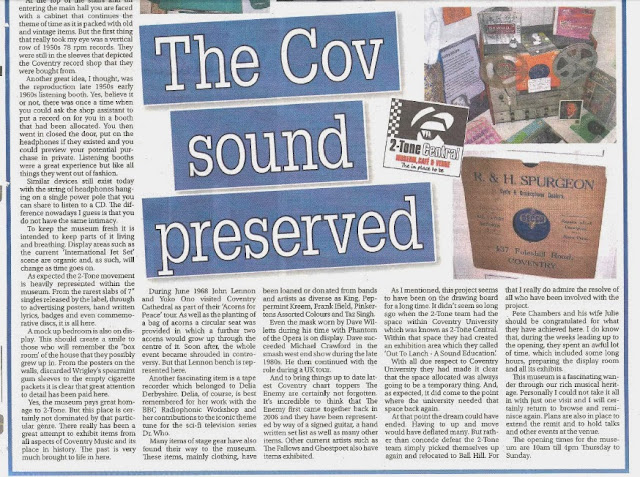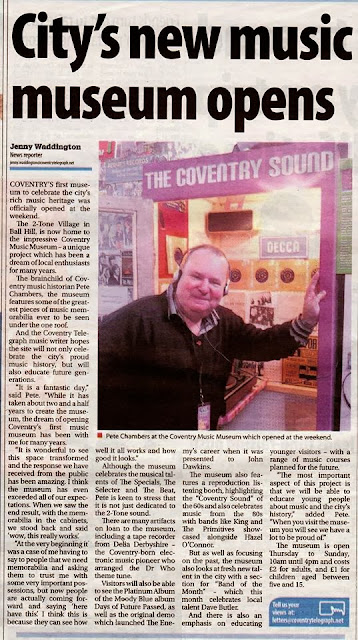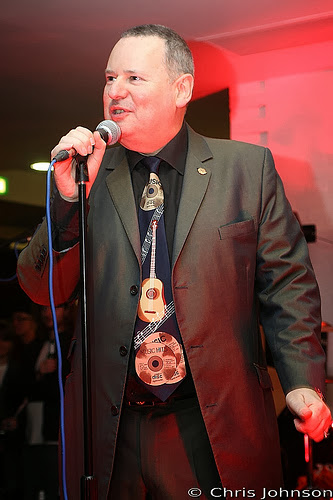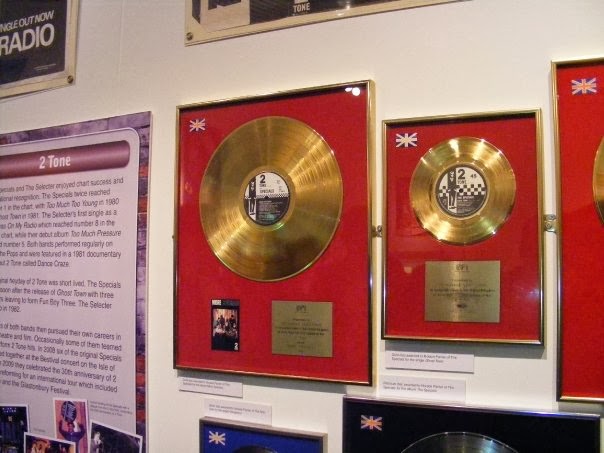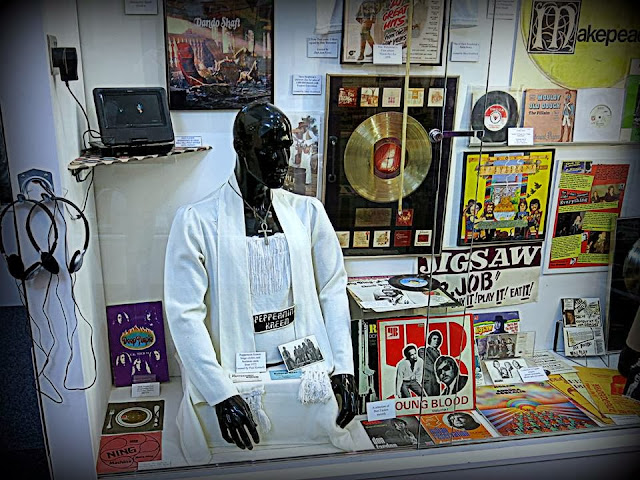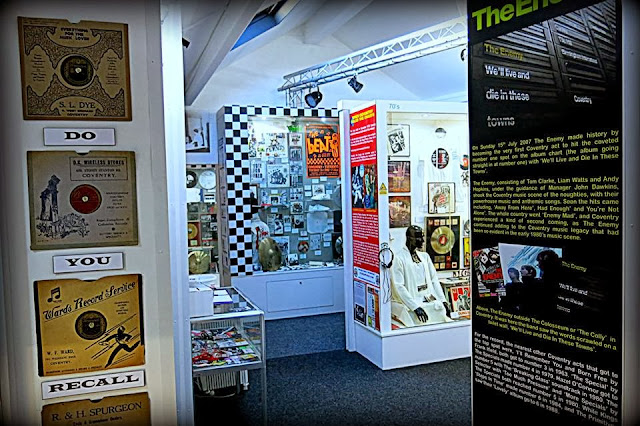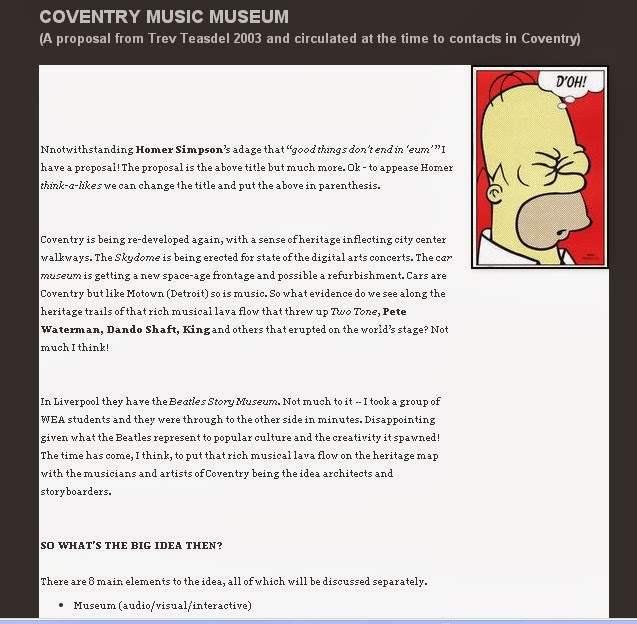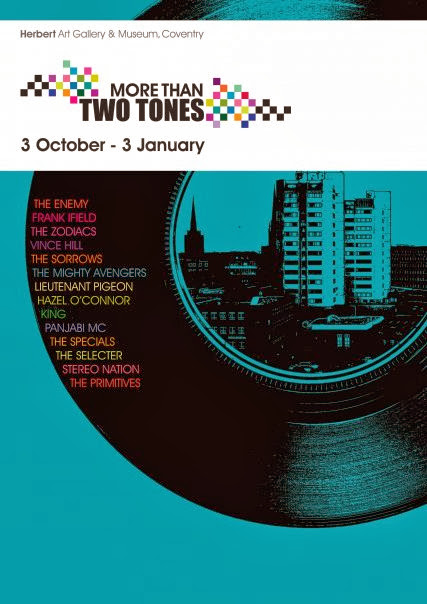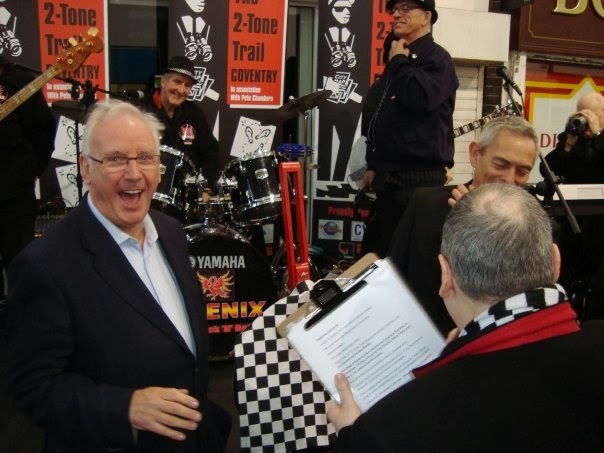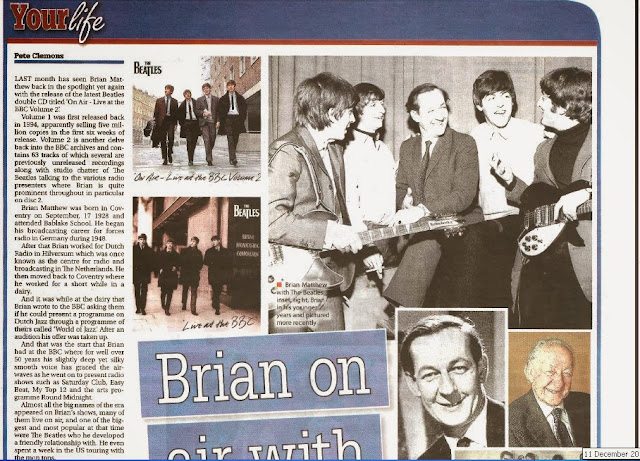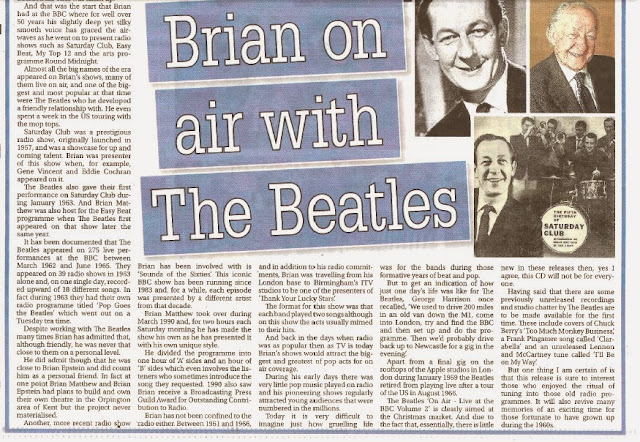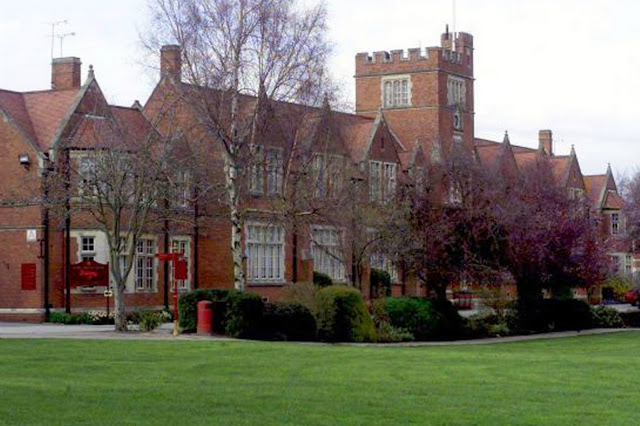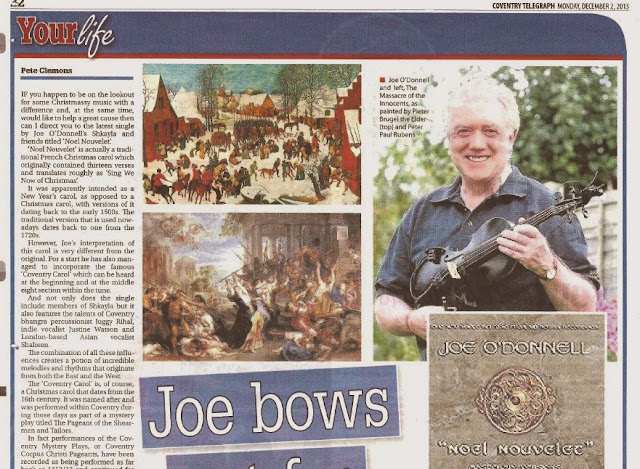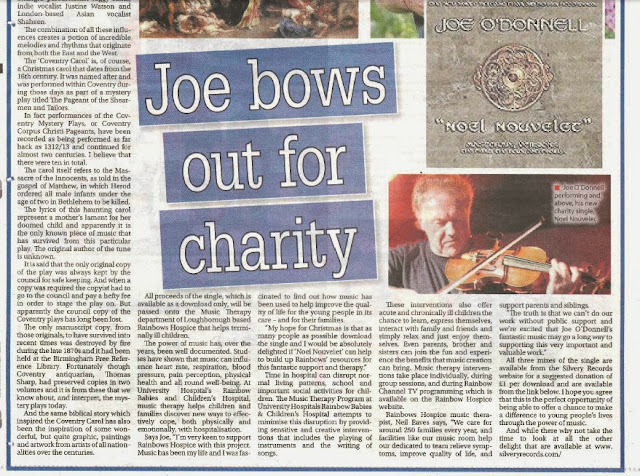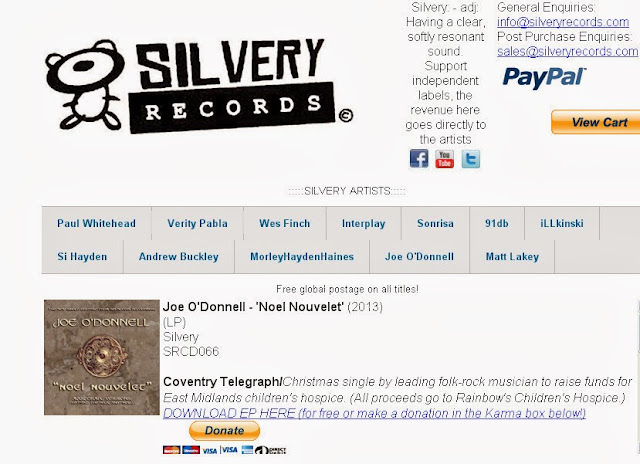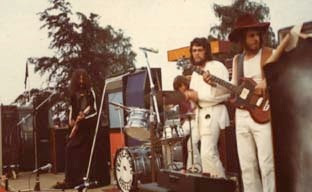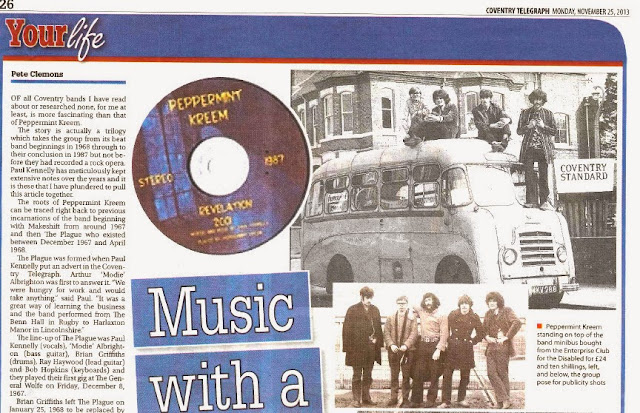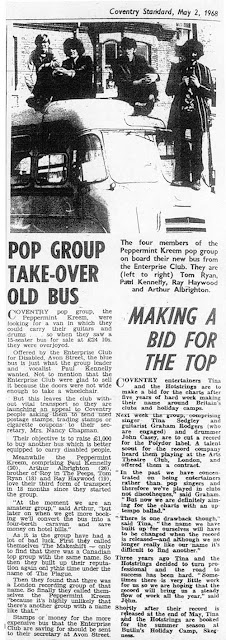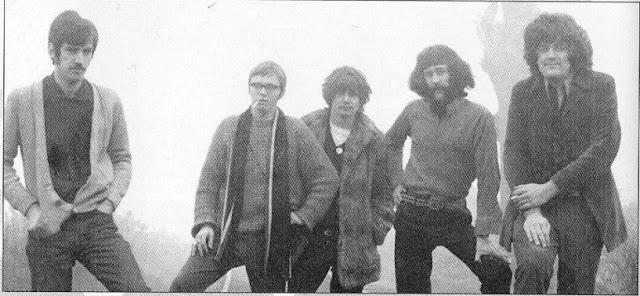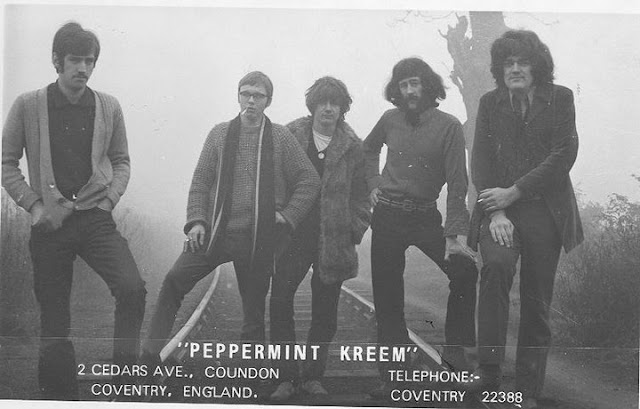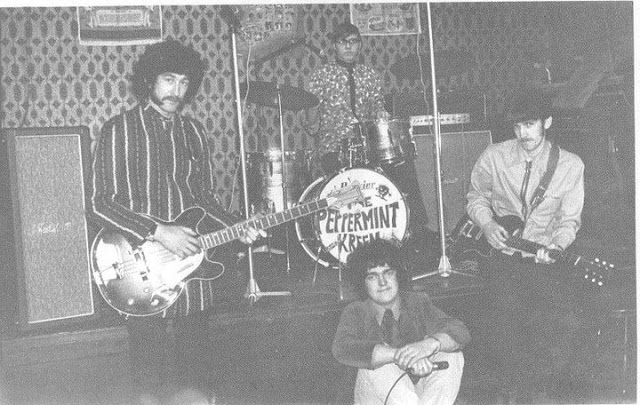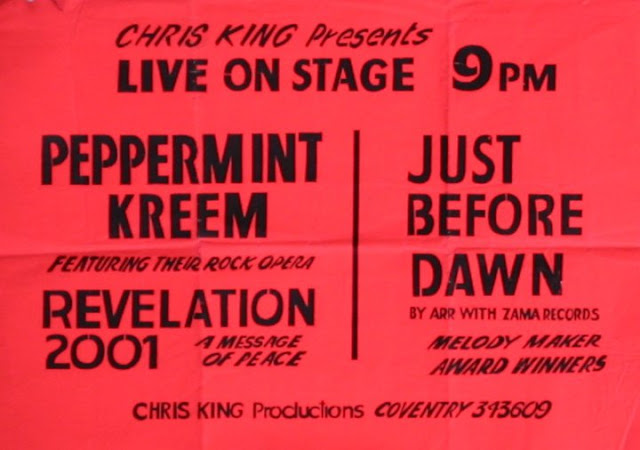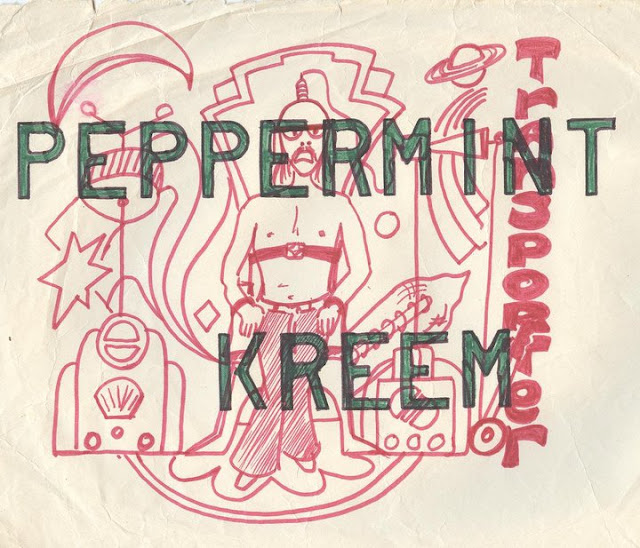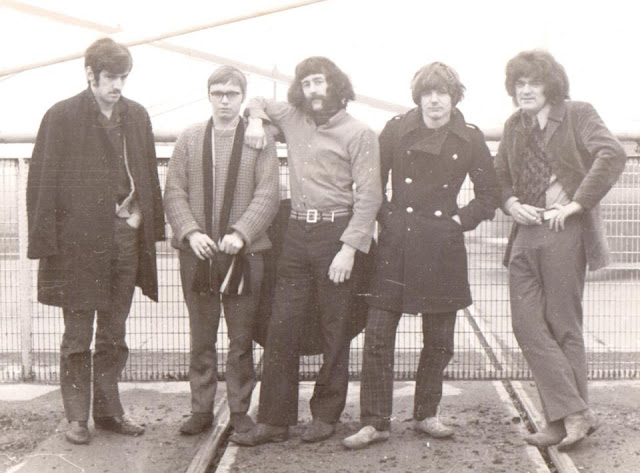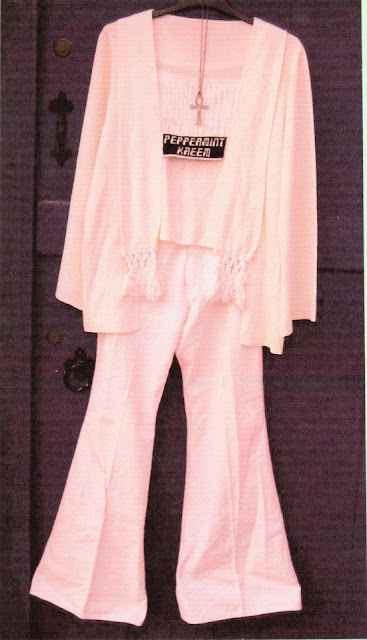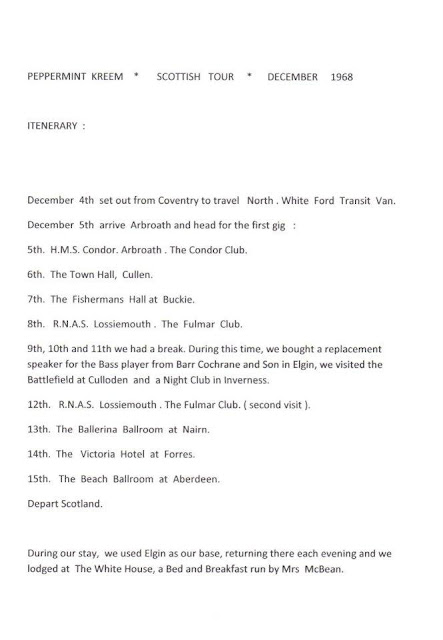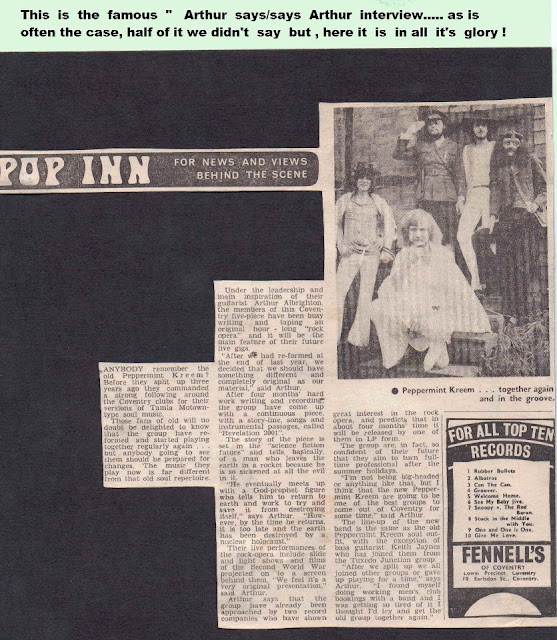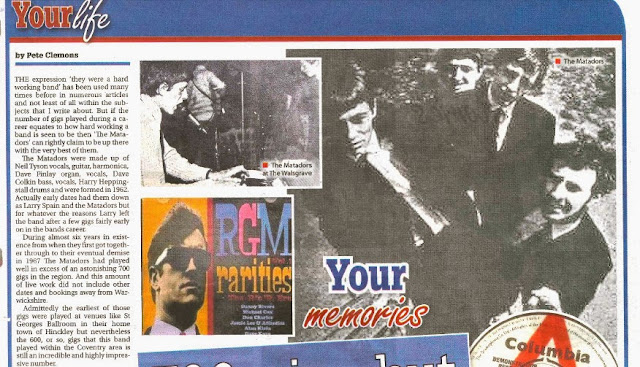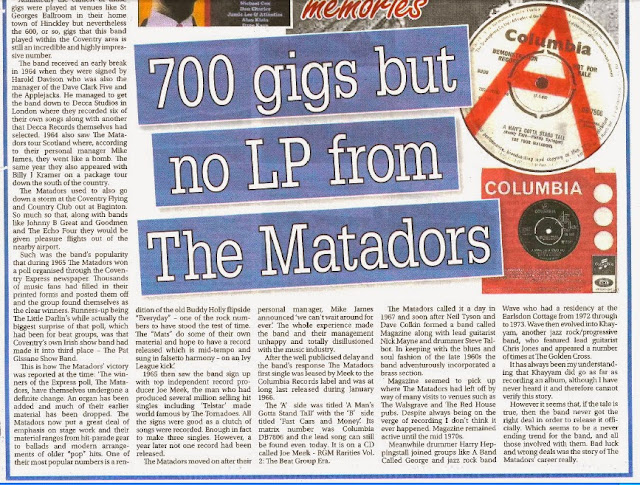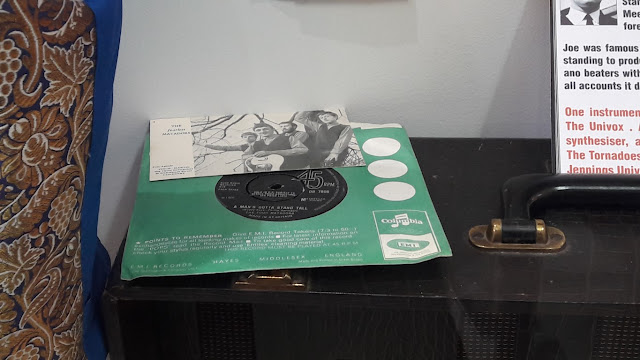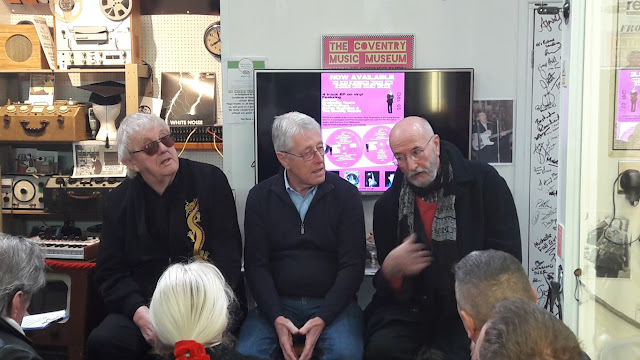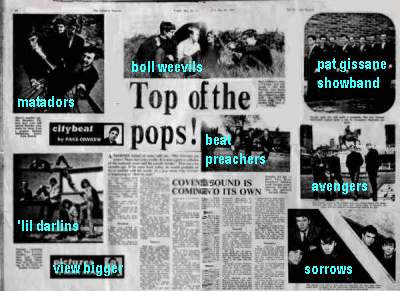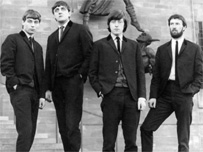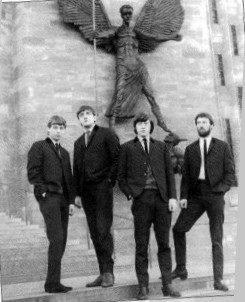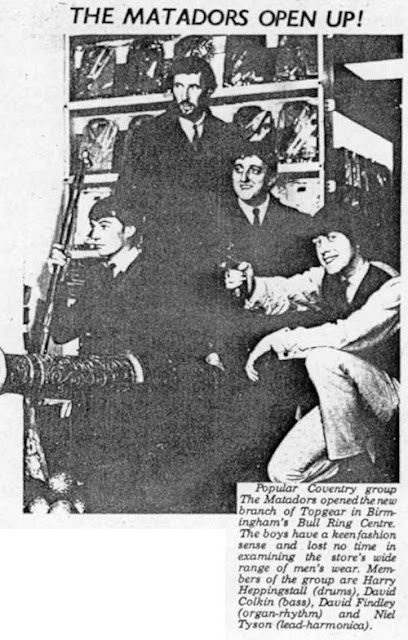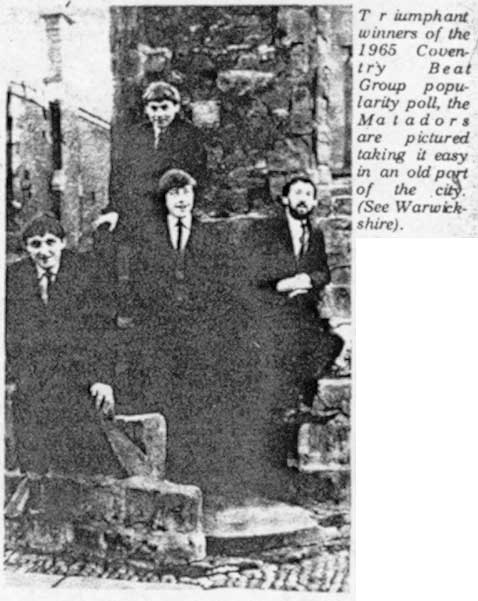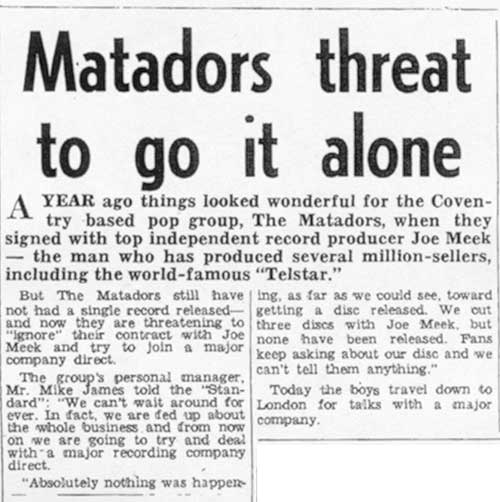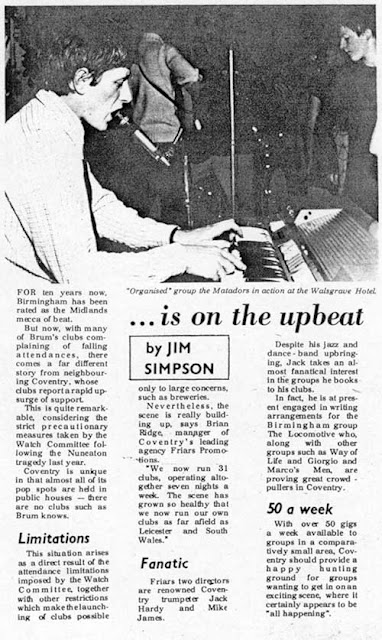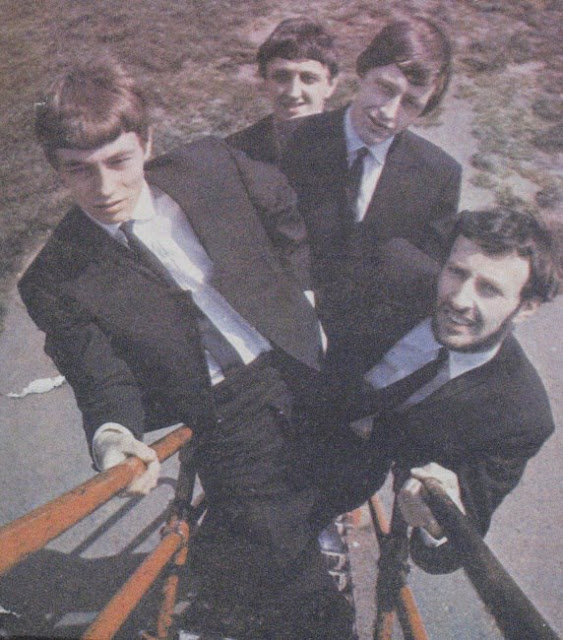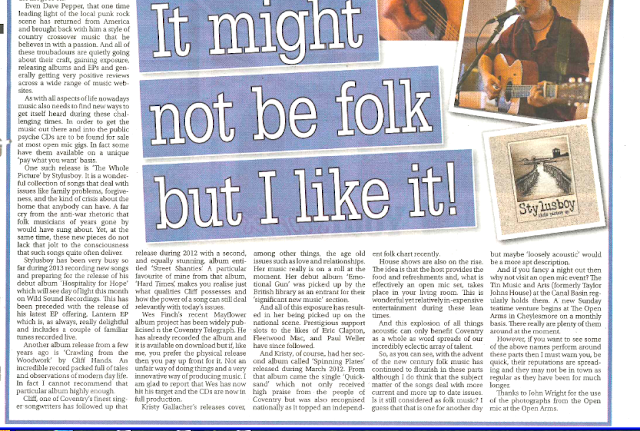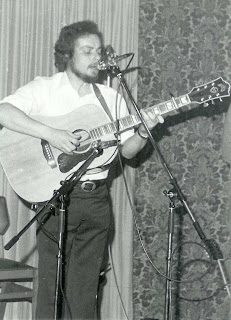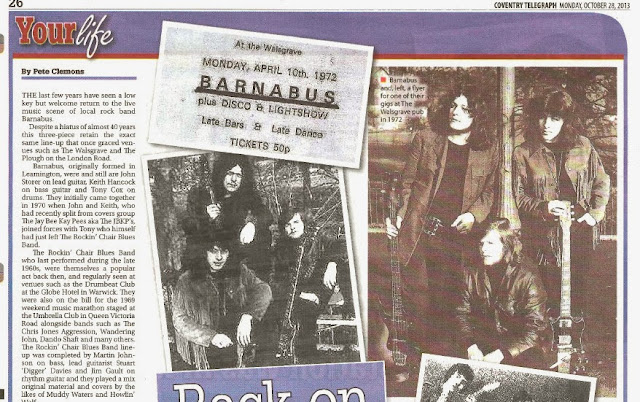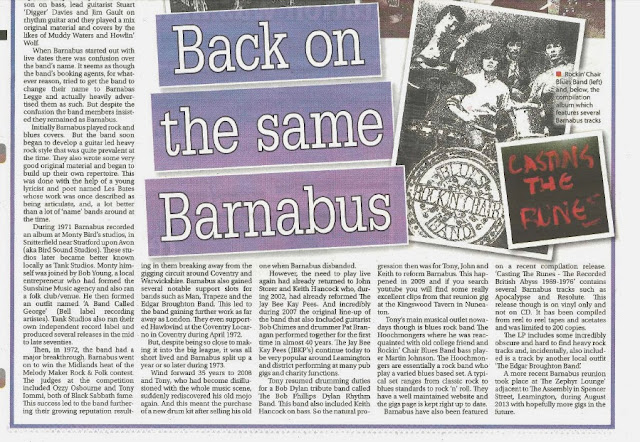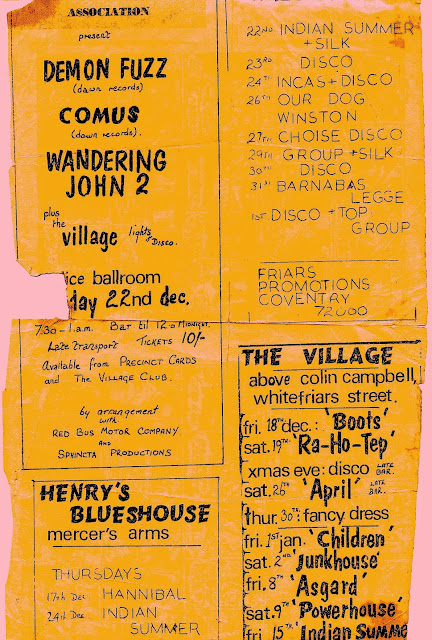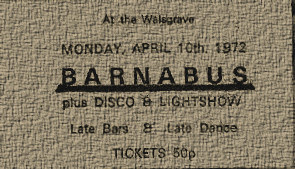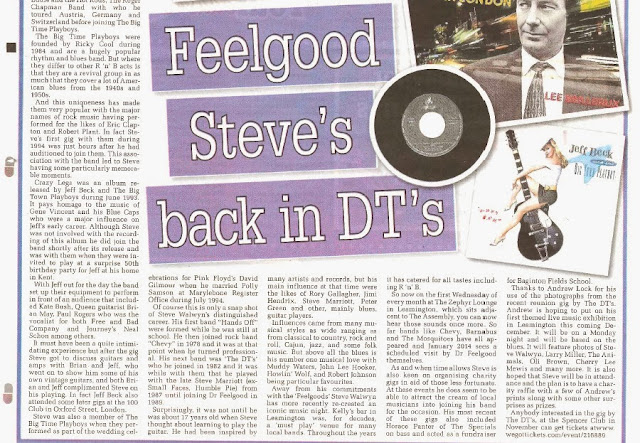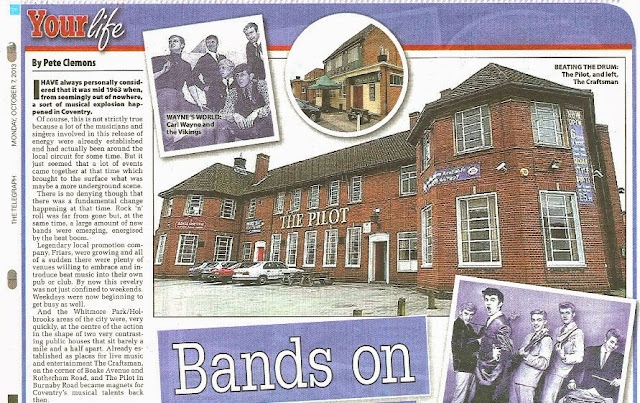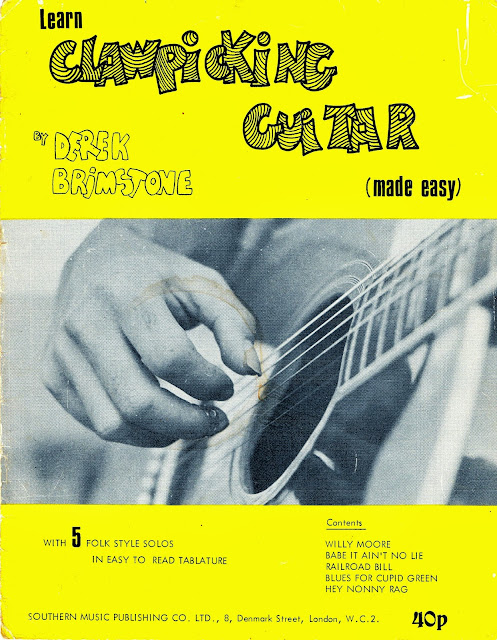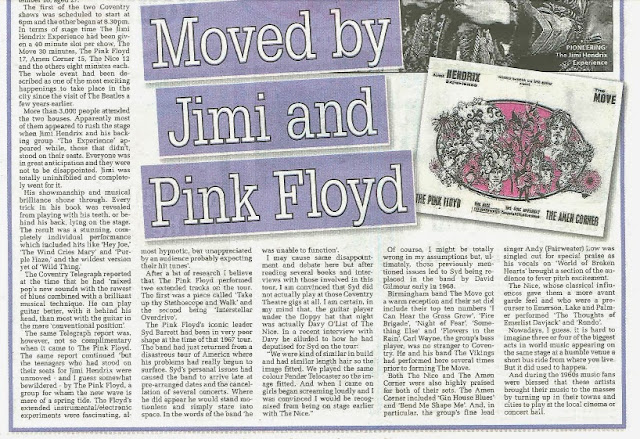The story of Coventry band Peppermint Kreem is a little complicated, involving a number of bands and line up changes but Pete Clemons has managed to unravel the band’s history for his latest article for the Coventry Telegraph – his 60th article not including the 24 Rock of Ages listings for the paper.
Peppermint Kreem has fan page on Facebook with lots of photos and such like https://www.facebook.com/pages/Peppermint-Kreem/136585376392428?fref=ts
The other Coventry bands include Makeshift / The Plague / Dr Slagg’s Confessions and at least 3 versions of Peppermint Kreem and associated bands New City Sounds and The Motion / Revolution.
CLICK the Links to read more about these bands and view some of the photos etc.
Music with a Minty Flavour!
Pete Clemons
OF all Coventry bands I have read about or researched none, for me at least, is more fascinating than that of Peppermint Kreem.
The story is actually a trilogy which takes the group from its beat band beginnings in 1968 through to their conclusion in 1987 but not before they had recorded a rock opera. Paul Kennelly has meticulously kept extensive notes over the years and it is these that I have plundered to pull this article together.
The roots of Peppermint Kreem can be traced right back to previous incarnations of the band beginning with Makeshift from around 1967 and then The Plague who existed between December 1967 and April 1968.
The Plague was formed when Paul Kennelly put an advert in the Coventry Telegraph. Arthur ‘Modie’ Albrighton was first to answer it. “We were hungry for work and would take anything.” said Paul. “It was a great way of learning the business and the band performed from The Benn Hall in Rugby to Harlaxton Manor in Lincolnshire.”
The line-up of The Plague was Paul Kennelly (vocals), ‘Modie’ Albrighton (bass guitar), Brian Griffiths (drums), Ray Haywood (lead guitar) and Bob Hopkins (keyboards) and they played their first gig at The General Wolfe on Friday, December 8, 1967.
Brian Griffiths left The Plague on January 25, 1968 to be replaced by Tom Ryan on drums. Bob Hopkins then left the band during April ’68.
At that point it was agreed to give the band a fresh start and a new name. Ray Haywood suggested Peppermint Creams to which Paul responded with a slight variation to Ray’s original idea. And so on April 26, 1968, they appeared as a four-piece at The Heart of England Club, Meriden, as Peppermint Kreem.
As covered by an article and various photographs for a Coventry Standard piece during May 1968 they bought a 15-seater bus from the Enterprise Club for the Disabled in Avon Street for PS24 and 10 shillings. This was used to carry their equipment.
1968 saw the band just ‘out there playing’. They were, not at that time, in to doing their own music. What they would do though was to rearrange numbers, speed them up/ slow them down and fill in with drum solo links. The band toured extensively and regularly appeared locally in venues such as The Navigation on the Stoney Stanton Road and The Walsgrave.
On July 13 Peppermint Kreem added keyboard player Dave Fairclough to the line-up. His first gig for them was on Saturday July 13, 1968 at the Hobmore Hotel, Yardley.
By late 1968, the band had been signed by Don Fardon, his own solo career had taken off, and Vince Martin, of Friars Promotions, stepped in as manager. A tour of Scotland, for impresario Albert Bonici, was booked for December which would take them as far north as Lossiemouth, Nairn, Aberdeen, Elgin and Arbroath.
But sadly, due to other commitments, only Paul and Dave were available. In order that the tour could go ahead, Paul and Dave hooked up with Glass Forest, a Welsh band who were based in Birmingham, the lineup being Paul on vocals, Dave on keyboards, Andre on guitar, Karl on bass and Byron on drums and the band performed as Peppermint Kreem.
And that was the end for this phase of Peppermint Kreem. Paul and Arthur (“Modie”) formed a band with Pete Davoile (Peppermint Kreem 2 and Seagull) on drums and Dec Wilson on guitar. Appearing as Dr. Slagg’s Confessions, they polished off the last few dates left in the old Peppermint Kreem diary. After that, they all went their separate ways, with Arthur replacing the bass player in New City Sounds, and Paul replacing Allen (“Sabu”) Parsons in The Motion.
Within days of Paul joining, the Motion changed their name to Revolution, and then eventually became Natural Gass. The line-up over this period was: Paul Kennelly (vocals), Dave Sutton (lead guitar), Reg Galland (bass), Granville Barber (drums), Bob Hopkins (keyboards), Pete Smith (ex-New City Sounds) on bass and Martin Lucas on lead guitar.
That wasn’t the end though for Peppermint Kreem. 1972 saw the band reform and they went onto to achieve many good things. The previous version of the band never got to record but this would all change with Peppermint Kreem mark 2. Paul admitted: “I had never got to write and perform my own material and it just seemed the right time. It wasn’t originally conceived as an opera. I just began to work up song ideas. What began as separate songs became a string of pieces, linked together. This was influenced by our standard set that was composed of varied material all tied together making a non-stop presentation.”
This time around Modie had switched to guitar with the rest of the band being Paul (vocals), Keith Jaynes (bass), Bob Hopkins (keyboards) and Pete Davoil (drums). “We recorded the opera at Bird sounds studio near Stratford-on-Avon and it was called Revelation 2001. Regrettably it was never released and I have no idea what became of the master tapes. We did play the whole thing live on carnival day at the War Memorial Park during July 1973. It was a fine summer’s day and we were set to go on stage at 9.30pm.
“For the first 20 minutes we played our versions of non-stop standards, then, after a short break we presented Revelation 2001. We held a respectable sized crowd for the standards show but I was not sure how they would react to the opera.
“You have to appreciate that the public were not directly paying for our performance, and could have drifted away at any time, but they didn’t, the melody, some of it haunting, held them spellbound.” That was last time that Peppermint Kreem played live together. However, in 1987 three of the band got back together yet again. Known as Peppermint Kreem 3, Paul Kennelly, ‘Modie’ Albrighton and Bob Hopkins, set about re-recording Revelation 2001 at Time Machine Studios in Earlsdon.
Sadly though it was never fully completed and although CD copies got ‘out there’ it remained unmixed. It is just made up of keyboards, guitar and Paul’s vocal. There are no drums or bass. Also, at Time Machine, Peppermint Kreem laid down keyboard and vocal tracks for another project called ‘Atlantis’. Again, this was never completed and remains unreleased.
Although there are no plans to complete these works it is still something that at least some kind of legacy of this wonderful story exists. ………………………………….
PEPPERMINT KREEM
circa 1967 – 1969 1972 – 1974 Source Broadgate Gnome / Rex Brough / Pete Chambers
Rock group – Roye Albrighton’s site is worth a visit http://www.royealbrighton.com/ns/home.asp
Peppermint Kreem on Facebook http://www.facebook.com/pages/Peppermint-Kreem/136585376392428
Great Photos on the Facebook site.
Line up: Paul Kennelly (vocals), Arthur (Mode) Albrighton (bass), Tom Ryan (drums), Ray Haywood (guitar), Dave Fairclough (Keyboard). (According to Broadgate Gnome) but instruments differ in Rex Brough account below – also two lines up mentioned.!
Lineup 1
Paul Kennelly – Vocals
Modie Albrighton – Guitar
Tom Ryan – Drums
Ray Haywood – Bass
Dave Faircloth – Keyboards
Line up 2
Paul Kennelly – Vocals
Pete Davoil – Drums
Keith James – Bass
Modie Albrighton – Guitar
Bob “Spindler” Hopkins – Keyboards
Recorded at Montybird recording studio in Snitterfield and possibly at Midland Sound Recorders around July 1968. They
were a great live attraction, using spectacular light shows and were extremely popular. they recorded a rock musical, Revelations 2001, which along with 4 other PK CDs is available now!
Pete Chambers writes “Modie was a top class guitarist and Blues harpist who began with
the Makeshift before moving on to Peppermint Kreem and New City Sounds. Peppermint Kreem headlines the Memorial Park gig in the mid 60’s. They recorded their own Rock Opera – Revelations 2001 at Time Machine Studios in Earlsdon. Modie was also in Nuts and Bolts, Crossfire and Heaven Sent – a club band that would include Rodney Byers (Radiation) in its ranks.Modie now lives in Germany where he is well known for his music and runs a recording studio).”
Pete Chambers writes in Godiva Rocked to a Backbeat
” The Albrighton brothers – Arthur (Modie) and his brother Roye (website http://www.royealbrighton.com/ns/home.asp) are
both now located in German where Modie runs a recording studio and both have found some fame. However their roots are entrenched in Coventry and its music scene. Modie -a top class guitar and blues harp player began with the local band Makeshift before moving to the 5 piece Peppermint Kreem that headlined the Memorial Park concert in the mid sixties.They even recorded their own rock Opera – Revelations 2001 (at the Time Machine Studios – Earlsdon).Members included Paul Kennelly, Tom Ryan, Dave Fairclough and Ray Haywood. Modie went on to join Nuts and Bolts, Crossfire and Heaven Sent – a club band that would include Roddy Byres (Radiation) in its ranks. Roye joined the German based prog rockers Nektar. (See his website). Modie and Paul played in Plague, Makeshift. Modie later played in new City Sounds too. Modie went to Germany in 1976. Modie remembered going to Coventry Theatre when he was 8 to see Larry Adler in Jack and the Beanstalk. Adler threw harmonicas out and asked if anyone that had one wanted to come on stage and join him. When Modie got on stage he told him he had his own and did a duet with him.”
 From Pete Chambers – Backbeat – Coventry Telegraph
From Pete Chambers – Backbeat – Coventry Telegraph
” Nostalgia: Peppermint Kreem lads had some fresh ideas
IT’S amazing the number of bands I come across who, for one reason or another, have nothing to show for their musical journey but precious memories.
No cuttings, photos or recorded music.
No such problem with one Coventry-based band, Peppermint Kreem.
These guys have kept a veritable museum of their band history from the 1960s, just the kind of thing we love here
at Backbeat. I caught up with founder members Paul Kennelly, Pete Davoile and Arthur (Modie) Albrighton and asked them about the life and times of one of Coventry’s more interesting bands.
Arthur (Modie) Albrighton was born in Coventry in 1941, and could play the harmonica by the age of four. “My dad would take me around the working men’s clubs,” Modie said. “I would perform pops and classics.
My most treasured memory from my from my early days, is doing a duet with Larry Adler, live on stage at the Hippodrome (Coventry Theatre).
“My first love was the blues. I was working as a radio and television engineer and playing in The Ricky Thompson Band at the time. I guess I wanted to try something different and this led to Peppermint Kreem.”
 Peppermint Kreem were formed when Paul Kennelly put an ad in the Telegraph. Arthur Albrighton answered the ad: “We were hungry for work and would take anything,” said Paul. “It was a great way of learning the business, from The Benn Hall in Rugby to Harlaxton Manor in Lincolnshire.”
Peppermint Kreem were formed when Paul Kennelly put an ad in the Telegraph. Arthur Albrighton answered the ad: “We were hungry for work and would take anything,” said Paul. “It was a great way of learning the business, from The Benn Hall in Rugby to Harlaxton Manor in Lincolnshire.”
Modie said: “We formed a makeshift band and we used the name The Plague. We had heard there was another Plague on the road, so we chose the name Peppermint Kreem. We thought no one else would have that one!
“The line-up was Paul Kennelly on vocals, Modie on bass, Ray Haywood on lead guitar, Dave Fairclough on keyboards and Tom Ryan on drums.”
Things looked good for the band, that was until they were lined up for a tour of Scotland in 1968, with the help of Vince Martin. Sadly some of the members were not prepared to commit. It was left to Paul and Dave Fairclough to join up with a Birmingham-based band Glass Forest to complete the tour.
“Considering we were a puttogether band, we did very well,” said Modie. “I’m so glad that I made it up there though.”
That wasn’t the end of the band, however, because in 1972 Peppermint Kreem 2 were formed.
The line-up was Modie on lead guitar with Paul on vocals, Pete (the feet) Davoile on drums, Bob ‘Spindler’ Hopkins on keyboards and Keith Jaynes on bass.
The mark one band Peppermint Kreem never got to record, the mark two version would put the record straight, in more ways than one.
“It was my baby,” reveals Paul. “I had never got to write and perform my own material and it just seemed the right
time. It wasn’t originally conceived as an opera. I just began to work up song ideas. What began as separate songs became a string of pieces, linked together. This was influenced by our standard set that was composed of varied material all tied together making a non-stop presentation.
“We recorded it at Birdsounds studio and it was called Revelation 2001. Regrettably it was never released and I have no idea what became of the master tapes. We did play the whole thing live on carnival day at War Memorial Park in July 1973. It was a fine summer day and we were to go on at 9.30pm.
“For the first 20 minutes we played our versions of non-stop standards, then, after a short break we presented Revelation 2001. We held a respectable-sized crowd for
the standards show but I was not sure how they would react to the opera. You have to appreciate that the public were not directly paying for our performance, and could have drifted away at any time, but they didn’t, the melody, some of it haunting, held them spellbound.”
Modie said: “When we re-formed in 1972/73 we achieved great things, but the band didn’t hang together and I emigrated to Germany, met my wonderful wife, Eva and continued to play guitar and harps with various bands. I was also employed by the US army at the time and made friends with serving personnel, teaching guitar and recording.
“We are still living in Germany.
Eva and I have a wonderful country house, part of which is given over to my business Falcon-Studios. Here I record up-and-coming artists, encourage them and publish original material.”
This year is the 40th anniversary of the band, and there is talk of a new album with a Nordic theme, plus a website with images, history and news, there may even be some merchandise.
I’ll leave the final words to former drummer Peter Davoile: “The most rewarding thing for me was being part of a professional band and playing something new and very creative!”
Pop Trivia – PEPPERMINT KREEM
SOME of the places the band played were Sibree Hall, Barker Butts School, Navigation Inn,
Leofric Hotel,
Nicholas Chamberlaine School, Newdigate Club, Chase Inn, Holyhead Hotel, Woolpack, Coventry City ground, Walsgrave Hotel, Bell Inn, Sportsmans Arms, Elite Club, Blue Boar (Watford Gap), Heath Hotel, General Wolf and others.
THE band recorded a second rock opera in 1987, entitled Atlantis.
PAUL is now living in Wales and runs the West Wales Museum of Childhood as a way of displaying his lifelong collection. Visit www.toymuseumwales.co.uk
Look out for three top guns off the local scene playing together at the Beer Engine, Gosford Street, on June 21 at 9pm. That’s Neol Davies and Aitch (both former Selecter) and John ‘Johny Slide’ Alderson, former Traveling Riverside Blues.
……………………………………………
Paul Kennelly says ” We regularly used Monty Birds studio to rehearse and record. I believe that it was an
old R.A.F. tracking station…or similar. I do have photos taken inside Bird Sound studios ” http://www.snitterfield.com/forum.asp?forumID=344&subject=Bygone-Snitterfield
his is Peppermint Kreem at the old crossing gates on Heath Road, Bedworth in November 1968. L to R : Ray Haywood ( guitar) Tom Ryan ( drums) Arthur Modie Albrighton ( bass guitar) Dave Fairclough ( keyboards) and Paul Kennelly ( vocals).
Paul Kennelly has a Facebook page dedicated to the history of Peppermint Kreem and many previous bands he was in – here https://www.facebook.com/pages/Peppermint-Kreem/136585376392428
ARTHUR ” MODIE ” ALBRIGHTON………. By Paul Kennelly.
“A complicated , multi talented instrumentalist and sound engineer of the highest standard.
He played Bass guitar with the 1968 band, Lead guitar with the 1973 band and guitar/keyboards in the 1987 sessions. Modie is the brother that I never had and I love him very much and hold him in high esteem. He is also one of funniest people that I have ever met…. just look at these great photographs.”
Paul kennelly’s outfit.The thinking behind the white outfits was, we had a huge , white fabric screen that hung on a scaffold, set behind the band , on stage. Modie developed a bizarre light show, using epidiasopes, cine projectors, light wheels and strobes. When this was in ” full flight ” , the projections fell on us as well as the screen ( well, that was the general idea ) ! Paul.
One of my most memorable gigs with Peppermint Kreem 2 was the Memorial Park. We played the Rock Opera ( Revelation 2001 ) but because we were on in the daylight, we could not use the light show. This was not good because we were as hot on visual effect as we were on getting our sound right. Paul.
Coventry Evening Telegraph 1973
L to R Bob Hopkins ( Rhythm Guitar) Ken Davenport ( Drums ) Tony Tallis ( Guitar ) Paul Kennelly ( Bass Guitar ) Grahame Fox ( Lead Guitar ).
Photo Shoot at the Cedars Pub in Coundon, Coventry. 1968.
Paul at The Navigation Inn, Coventry. 1968. Tom Ryan on drums.
Paul kennelly’s outfit.The thinking behind the white outfits was, we had a huge , white fabric screen that hung on a scaffold, set behind the band , on stage. Modie developed a bizarre light show, using epidiasopes, cine projectors, light wheels and strobes. When this was in ” full flight ” , the projections fell on us as well as the screen ( well, that was the general idea ) ! Paul.
Coventry Evening Telegraph 1973
One of my most memorable gigs with Peppermint Kreem 2 was the Memorial Park. We played the Rock Opera ( Revelation 2001 ) but because we were on in the daylight, we could not use the light show. This was not good because we were as hot on visual effect as we were on getting our sound right. Paul.

